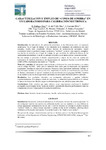
Please use this identifier to cite or link to this item:
http://ricaxcan.uaz.edu.mx/jspui/handle/20.500.11845/747Full metadata record
| DC Field | Value | Language |
|---|---|---|
| dc.contributor | 6207 | es_ES |
| dc.contributor.other | https://orcid.org/0000-0002-7081-9084 | es_ES |
| dc.coverage.spatial | Global | es_ES |
| dc.creator | Gallego Díaz, Eduardo | - |
| dc.creator | del Valle Diez, Aurora | - |
| dc.creator | Lorente, Alfredo | - |
| dc.creator | Vega Carrillo, Héctor René | - |
| dc.creator | Mendez Villafañe, Roberto | - |
| dc.creator | Ibañez Fernández, Javier | - |
| dc.date.accessioned | 2019-03-14T18:16:09Z | - |
| dc.date.available | 2019-03-14T18:16:09Z | - |
| dc.date.issued | 2011-05 | - |
| dc.identifier | info:eu-repo/semantics/publishedVersion | es_ES |
| dc.identifier.uri | http://localhost/xmlui/handle/20.500.11845/747 | - |
| dc.identifier.uri | https://doi.org/10.48779/rfab-0185 | es_ES |
| dc.description | Introduction: In neutron calibration laboratories, if differences between the neutron spectrum "at the workplace" and the one used in the calibration facility are very marked, it is very difficult to obtain appropriate normalization factors and it will be desirable to attempt to produce neutron "realistic" fields, i.e. whose energy spectrum is similar to that in the workplace, allowing direct calibration of dosimetric instruments. One method used is the “shadow cone method”. We present the design, characterization and use of shadow cones of the Neutron Measurements Laboratory of the Department of Nuclear Engineering, UPM ETSII (LMN-UPM), using an 241Am- Be source.Material and methods: Interposing between the source and the detector a shadow cone, and using MCNP5 code, the following quantities are estimated for both, the total radiation and the scattered radiation: neutrón spectral energydistribution, neutron fluence and ambient dose equivalent. In addition, measurements were performed without cones and with them, using the Bonner sphere spectrometer system, obtaining the spectrum by deconvolution with the BUNKI program. Also the ambient dose equivalent rate is measured with a calibrated monitor Berthold LB6411. Results: The results are fully consistent and are experimentally validated. For example, behind each cone, the scattered radiation should be the same, which is verified in the calculations and in the measurements, with an almost identical spectrum obtained for all of them. Conclusions: We conclude that both calculations and experiments confirm the purpose of the use of "shadow cone", allowing perfectly distinguish between the direct and scattered neutron radiation. | es_ES |
| dc.description.abstract | Introducción: En laboratorios de calibración neutrónica, si las diferencias entre los espectros neutrónicos “en el lugar de trabajo” y los utilizados en la instalación de calibración son muy acusadas, resulta muy complicado obtener factores de normalización adecuados, siendo conveniente tratar de producir campos neutrónicos “realistas”, es decir, cuyo espectro energético sea similar al existente en el lugar de trabajo, lo que permitiría la calibración directa de los instrumentos dosimétricos. Uno de los métodos utilizados, es el método de los “conos de sombra”. En este trabajo se presentan el diseño, caracterización y empleo de los conos de sombra del Laboratorio de medidas neutrónicas del Departamento de Ingeniería Nuclear de la ETSII-UPM (LMN-UPM), empleándose una fuente de 241Am-Be. Material y métodos: Se interponen entre la fuente y el detector los conos de sombra y se estima con el código MCNP5, tanto para la radiación total como para la dispersada, las siguientes magnitudes: distribución espectral en energías, fluencia y dosis equivalente ambiental. Además, se han efectuado medidas sin conos y con ellos, empleando el sistema de espectrometría con esferas de Bonner, obteniendo el espectro mediante su deconvolución con el programa BUNKI. También se ha medido la tasa de dosis equivalente ambiental con un monitor Berthold LB6411 calibrado. Resultados: Los resultados obtenidos son plenamente coherentes y quedan validados experimentalmente. Por ejemplo, detrás de cada cono, la radiación dispersa debería ser la misma, lo que se verifica en los cálculos ya que se obtienen espectros casi idénticos para todos ellos. Conclusiones: Cabe concluir que tanto cálculos como experimentos confirman la finalidad perseguida con el empleo de los “conos de sombra”, permitiendo discernir perfectamente entre las componentes directa y dispersada de la radiación neutrónica. | es_ES |
| dc.language.iso | spa | es_ES |
| dc.publisher | Sociedad Española de Física Médica | es_ES |
| dc.relation.uri | generalPublic | es_ES |
| dc.rights | Atribución-NoComercial-CompartirIgual 3.0 Estados Unidos de América | * |
| dc.rights.uri | http://creativecommons.org/licenses/by-nc-sa/3.0/us/ | * |
| dc.source | XVIII Congreso Nacional de la SEFM/XVIII Congreso Nacional de la SEPR. Calidad y seguridad, Sevilla, España, 10-13 de mayo | es_ES |
| dc.subject.classification | CIENCIAS FISICO MATEMATICAS Y CIENCIAS DE LA TIERRA [1] | es_ES |
| dc.subject.other | Neutron | es_ES |
| dc.subject.other | neutrón source | es_ES |
| dc.subject.other | Am-Be | es_ES |
| dc.subject.other | scattered radiation | es_ES |
| dc.subject.other | shadow cone | es_ES |
| dc.subject.other | fuente de neutrones | es_ES |
| dc.subject.other | radiación dispersa | es_ES |
| dc.subject.other | conos de sombra | es_ES |
| dc.title | Caracterización y empleo de "Conos de sombra" en un laboratorio para calibración neutrónica | es_ES |
| dc.type | info:eu-repo/semantics/conferenceObject | es_ES |
| Appears in Collections: | *Documentos Académicos*-- UA Ciencias Nucleares | |
Files in This Item:
| File | Description | Size | Format | |
|---|---|---|---|---|
| Caracterización y empleo de conos de sombra.pdf | 588,71 kB | Adobe PDF |  View/Open |
This item is licensed under a Creative Commons License
